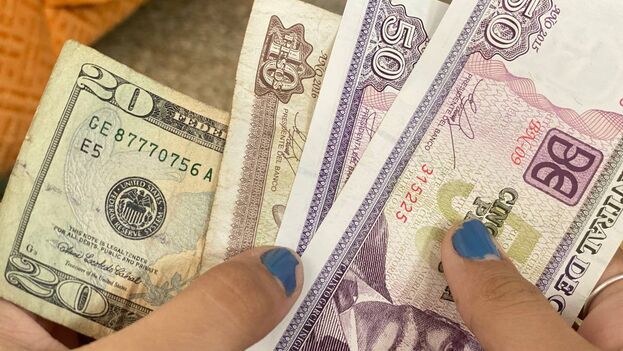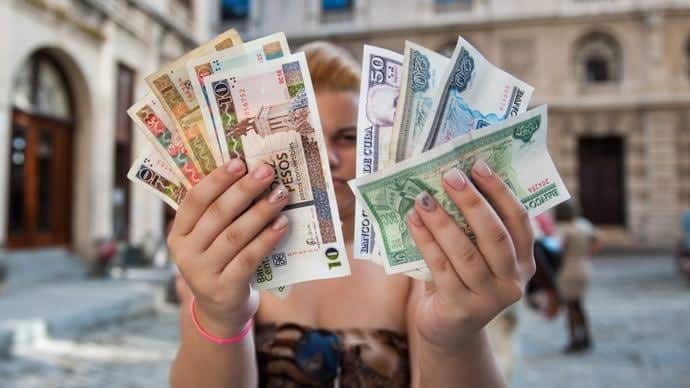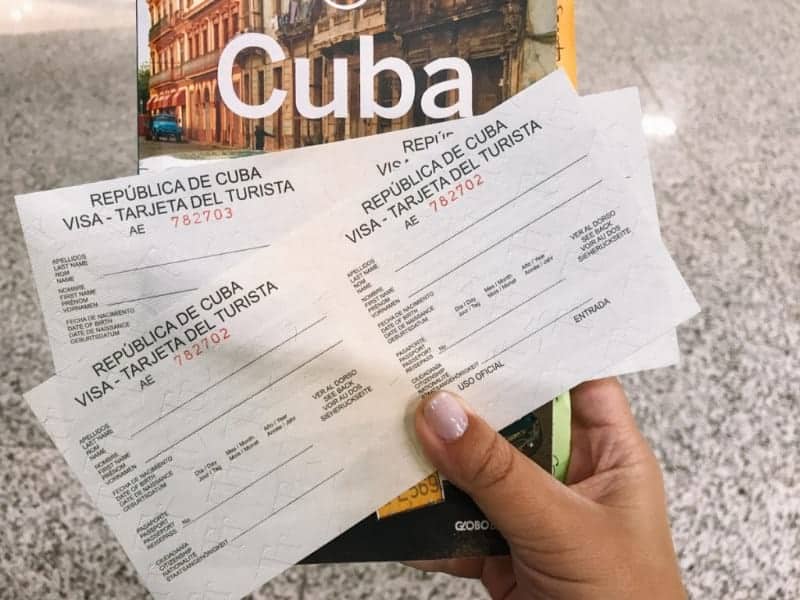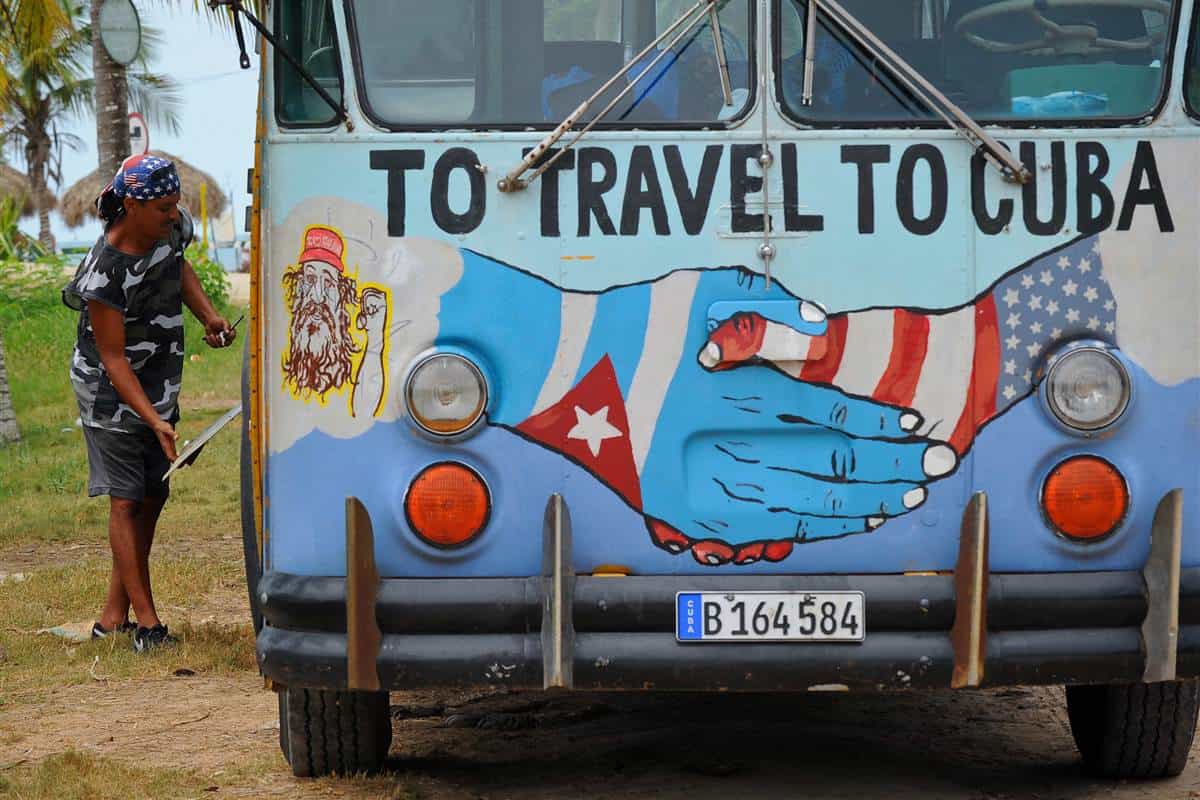Cuba is not short of amazing surprises for first-time travelers. You will encounter famous worldwide beaches and landscapes, historic cities, fascinating culture and traditions, and the most welcoming people. Naturally, you will want to see it all.
However, with so many things to do and places to visit, the cost of a trip to Cuba can get out of control very quickly.
This guide offers an updated, down-to-earth holiday budget for Cuba. Unlike other articles that just display data scraped from travel websites, we will help you with a realistic trip to Cuba cost. Our breakdown includes expected accommodation costs, transportation, food and drinks, entertainment, Internet, and even tipping. We close the article with helpful tips that will save you some bucks!
How Much Does a Trip to Cuba Cost?
A typical seven days trip to Cuba costs anywhere from 1,200 to 3,000 USD, including flights, accommodation, and insurance.
Plan to pay at least 500 USD for your flight ticket, but it can be as high as 1,700 USD, especially if departing from the US. On the other hand, accommodations in Cuba can be as cheap as 10 USD/night if staying in “casas particulares”.
Also, your trip to Cuba’s cost can go lower or higher depending on your travel season. Cuba’s dry season is more popular than the wet season, so expect higher prices during peak months.
Let’s get into more pricing details for flights and accommodations in Cuba.
Costs of flights to Cuba
Two major events have significantly increased the costs of flying to Cuba in the last few years:
- US restrictions on air travel to Cuba. Currently, US airlines are permitted to fly into Havana Airport only.
- The impact of the COVID-19 pandemic.
Flights to Cuba are expensive, and you can expect to pay at least 400 USD for a ticket when flying to Cuba from Canada or the US. If you are traveling from the US to Cuba, flights can go as high as 1,700 USD.
Many flight search engines like Expedia, Orbit, and Kayak don’t carry flights to Cuba from the US. Instead, use Skyscanner or book your flights directly through your airline of choice.
Accommodation costs in Cuba
Popular options for accommodations in Cuba include hotels, resorts, and private houses (known as “casas particulares”, “hostales”, or Airbnbs in Cuba).
Renting a room in a “casa particular” is the most affordable option and the most authentic and culturally immersive, which is a plus if you are traveling under the Support for the Cuban People license. Many casas also include a home-cooked breakfast each morning! You can compare listing prices on Skyscanner too.
Casas particulares: most casas particulares cost between 20 to 300 USD/night. Most people pay between 20 to 50 USD a night on average.
Hotels and resorts: most start at 100 USD/night and go as high as 800 USD/night.
As you can see from the prices listed above, accommodations are a huge factor in your trip to Cuba cost.
Travel health insurance
Besides the Cuba Tourist Card, all travelers are required to show proof of travel insurance in Cuba. Specifically, your insurance needs to cover medical expenses (travel protection is not required). Companies like Insubuy can cover your medical emergencies on the island starting at 8 USD per week per person.
How Much Money Do You Need in Cuba?
Generally, you can expect to spend 40 – 120 USD per day in Cuba, excluding flight tickets and accommodations.
However, the final price tag of your trip to Cuba will depend on the kind of trip you want. For example, loading your itinerary with guided tours and expensive restaurants will be pricier than eating at down-to-earth “paladares” and free walking tours.
Another factor that will impact your budget is where you stay. Big cities like Havana are costlier than more rural areas and smaller towns.
Finally, you need to consider that prices in Cuba for tourists are generally higher. For example, a restaurant might keep aside a menu for tourists with prices 20% higher. Likewise, private transfers will try to charge 30 to 40% above the normal rate for a local.
Let’s break down these numbers.
First Things First: Understanding the Cuban Currency
The Cuban currency system can be tricky for first-time visitors, one of the most interesting facts about Cuba. Honestly, you can’t estimate a realistic cost of a trip to Cuba without understanding how to use the Cuban Peso.
Check out our Cuban currency guide for more detailed information.
Let’s get a few facts straight.
The Cuban Peso (CUP) is the primary currency
The island had two official currencies until January 2021: the Cuban Peso (CUP) and the Cuban Convertible Peso (CUC). The CUC was just eliminated in 2021, and the CUP remained the only official currency on the island. So, ignore anything you have read about the CUC because it does not circulate in Cuba anymore.
Euros will get you more
Today, the Euro is one of the two highest-value currencies in Cuba. If you bring it, you will get more value for your money. They are also accepted almost everywhere in Cuba.
You can bring US dollars too. But they come with two limitations you should consider:
- State-owned tourism facilities won’t take your USDs. Therefore, you must sell them first.
- There is an exchange fee of 8% for US dollars, compared to 2% for other foreign currencies.
Still, US dollars are widely sought after on the island.
For example, the image below shows the Euro and the USD value in the black market. This gives you an indication of how much the Euro is worth in Cuba. Check El Toque’s currency tracker for updated information.
For currency prices at official exchange offices (CADECA), visit CADECA’s website for updated exchange rates.
You can’t bring Cuban Pesos
You can bring many things to Cuba, but you cannot bring Cuban Pesos. It’s not possible to exchange Cuban currency before you touch down in Cuba.
To stock up on Cuban currency, you can exchange your foreign money at official currency exchange centers called CADECAs (Casas de Cambio). You can find CADECA offices in Cuban airports, resorts, hotels, shopping centers, and banks.
With the Cuban currency out of the way, let’s get into your travel budget for Cuba.
Transportation costs in Cuba
Cuba’s transportation options include taxis, classic American cars or “almendrones”, buses, rental cars, and domestic flights.
Taxis and city buses are great options for traveling short distances. You can cover longer distances by charter buses and domestic flights. Although more expensive, renting a car is also an option.
Private taxis: 1.50-3 USD/kilometer.
Taxi from the airport to your accommodation: 35 USD.
“Colectivos” or “almendrones” with fixed routes: 1-2 USD.
Bicitaxis: 3-5 USD short routes, usually in Old Havana and Centro Havana.
Viazul buses for interprovincial trips: from 6 USD to 57 USD depending on the province you are going to. For example, the Havana to Varadero route in Viazul costs about 10 USD.
Rental car: starts at 69 USD per day.
Trains: 3-7 USD
Domestic flights: ticket prices can range from 90 USD on the low end to 140 USD on the higher end. You can compare prices and book tickets here.
Private transfers: prices vary depending on where you are headed. For example, here is what you can expect to pay for these popular transfers:
- Havana to Varadero: 120 USD
- Havana to Viñales: 140 USD
- Havana to Trinidad: 215 USD
- Havana to Cienfuegos: 180 USD
Food and drinks costs in Cuba
The cost of food and drink in Cuba varies quite a bit depending on where you eat.
Breakfast at your casa is often as low as 7-12 USD, while a meal at a sit-down restaurant is anywhere from 10-20+ USD.
Snacks from street vendors can cost you from 3 to 5 USD.
On average, the prices of popular drinks in Cuba are as follows:
- 1.5 liter bottle of water: 3 USD (Pro tip – bring a water bottle with filter)
- Coffe: 1.50 USD
- Beer: 4 USD
- Piña Colada: 6-7 USD
- Daiquiri: 5 USD
- Mojito: 5 USD
- Cuba Libre: 4 USD
- Coconut water: 3 USD
Here is what you can expect to pay for traditional dishes in Cuba:
- Ropa vieja (boiled and shredded meat): 8 USD
- Arroz y frijoles negros (rice and black beans): 4 USD
- Arroz congri: 4 USD
- Arroz imperial (imperial rice): 10 USD
- Sandwich cubano (Cuban sandwich): 6 USD
- Pan con lechon (roasted pork sandwich): 6 USD
- Masas de cerdo fritas (fried pork chops): 7-9 USD
- Bistec de cerdo (pork steak): 7-9 USD
- Arroz con leche (rice pudding dessert): 4 USD
Entertainment costs in Cuba
Entertainment costs will, of course, vary depending on what exactly you have in mind. Here are the average prices for a couple of popular activities:
- City tour of Havana in a classic car: 40-60 USD.
- Bike tour of Havana: 15 USD.
- Tickets to a baseball game: 3 USD /each.
- Admission to museums: from 2 to 10 USD/person.
- Show at Cabaret Tropicana: starts at 80 USD/person.
- Horse riding in Viñales: 5 USD/hour.
- Multi-city excursions: 175+ USD.
- Scuba diving in Maria la Gorda: 60 USD+ for a single immersion.
Internet costs in Cuba
Internet in Cuba is very unreliable, but you’ve got a couple of options to get WiFi in Cuba:
- Using a NAUTA card: 0.50 USD/hour.
- Using a Cubacel Tur card: 25 USD/2.50 GB.
- (International roaming) AT&T: $3.00/minute for calls; $0.50/text; $2.05/MB for data.
- (International roaming) T-Mobile: $2.00/minute for calls; $0.50/text; $2.00/MB for data.
Tipping in Cuba
In Cuba, tipping is widespread, and you’re encouraged to tip people who have performed a service for you–especially if they did an awesome job! Who should you tip in Cuba:
- Hotel maids: 1-3 USD/night.
- Hotel bellboys: 1-5 USD at check-in and again at check-out.
- Restaurant waiters and bartenders: 10% gratuity.
- Tour guides: 5-10 USD.
- Street musicians: 1 USD.
- Parking valets: 1 USD.
- Bathroom attendants: 0.25-0.50 USD.
How Much Money Can You Take to Cuba?
You can bring up to 5,000 USD in cash to Cuba. You will have to declare amounts exceeding 5,000 USD to Cuban Customs.
Money-Saving Tips
You can do a few things to reduce your final trip to Cuba cost. For more practical advice for your trip to Cuba, check out our best Cuba travel tips.
Stay in a casa particular
Casas particulares are the most affordable accommodations in Cuba. There are over 14,000 on the island to choose from!
Casas are run by Cuban families who offer great suggestions about exciting things to do and see in the area. Plus, they cook lovely home-cooked meals.
Renting a room in a casa can be as low as 10 USD/night and as high as 800 USD/night at luxurious casas. You can also snag breakfast for 7-12 USD most of the time. You can check out the latest listings here.
Remember that it’s illegal to crash at someone’s place for free, even if they invite you!
Eat at paladares and cafeterias
Paladares (private restaurants) and cafeterias are places where you can get authentic Cuban cuisine at an affordable price.
Thanks to Cuba’s relaxing restrictions on private businesses, there are now over 2,000 paladares to choose from. Paladares offer a wealth of menu options and great service at a reasonable price. Meals typically cost between 10-25 USD.
Look at some of Havana’s best paladares in the Lonely Planet Pocket Guide of Havana.
Share urban taxis
Shared taxis–also called “colectivos” or “almendrones”–are taxis that travel along a fixed route. They stand out because they look like vintage American cars from the 1950s!
Flag them down by standing along the route and raising your hand. The driver will stop and let you hop aboard if there’s room in the taxi. The standard cost to ride is 1 USD.
Book tours directly from local guides
Tours are an excellent way to learn about authentic Cuba from a knowledgeable guide. For example, Havana has so many things to do that you should consider hiring a seasoned local guide.
However, hiring inexperienced or authorized “tour guides” is a waste of money and could also be dangerous. Although Cuba is generally a safe country, there is no need to put yourself at risk.
Instead, book all your tours through well-respected local guides available in marketplaces like Tour Republic. You can book experiences all over the country, from museum tours to urban cuisine and horseback riding.
Haggling and bargaining
Almost anything you pay for in Cuba can be haggled or bargained. Exceptions are certain restaurants, casas particulares, and the Viazul bus.
You should haggle with taxi drivers (unless you’re comfortable paying the total price, of course!). Talk to your casa host so they can fill you in on a fair price for the area.
Get a Cuban Phrasebook and learn some expressions for a better chance of success.
Cheapest time to travel to Cuba
The rainy season (June to October) is typically the cheapest time to travel to Cuba. If you are a budget-savvy traveler thinking of backpacking Cuba, you will save some bucks if you fly to Cuba during the rainy season, especially in September. However, this season comes with bugs and mosquitoes in Cuba, so bring strong mosquito repellent.
Is Cuba Cheap to Visit?
We can’t say that Cuba is the cheapest travel destination. Flights can get incredibly expensive, especially from the US. The price of high-end hotels is similar to those in other expensive destinations.
However, Cuba is generally affordable, especially if you book all-inclusive vacation packages from countries other than the US. It can get even cheaper if you stay in casas particulares, eat at paladares, and share taxis.
But in all honesty, if you are traveling as a tourist, you may want to tour around in private cars, stay at least a day at a beach resort, and eat delicious traditional food other than rice and beans. Consider these things when estimating your trip to Cuba cost.
We put much effort into getting updated prices in Cuba for tourists. If you liked this post, please share it with your friends traveling to Cuba! Otherwise, leave your comments and suggestions below.
Essential Travel Logistics For Cuba
Cuban Tourist Card – If your Cuban Tourist Card (a.k.a Cuban Tourist Visa) isn’t bundled into your airline ticket or travel package, buy it only through EasyTouristCard.
Travel Health Insurance – Travel medical insurance is an entry requirement for Cuba, so you can’t skip it. Travelers can get travel health insurance for Cuba via Insubuy. Travel protection benefits such as trip interruption and cancellation, baggage delay insurance, etc., are not required.
Essential Items to Pack – Bring the essential travel necessities that you may not be able to get in Cuba:
- First aid kit
- Hand sanitizer
- Face masks
- Water bottle with filter
- Sunscreen
- Mosquito repellent
- Pin adapter (for Europeans)
- Travel guide
- Spanish-English phrasebook
- Suggested Reading: The Cubans: Ordinary Lives in Extraordinary Times
Read our complete packing list for Cuba.
Find Accommodations – Find hotels or casas particulares (private accommodations) on Skyscanner, which lists thousands of accommodations available in Cuba.
Book Your Flight – Book cheap flights to Cuba on Skyscanner, our favorite flight search engine to find deals on flights to Cuba.





Great info. Current.and relevant. Many thanks!
If you want to have more bang for your currency do not change for cuban peso at the bank or airport. The usd in the black market is over 250cup. Exchange with cubans at either the hotel or even outside the bank.
Do they take UK Sterling currency?
Your overview of Cuba was relatively informative. However, they take Canadian dollars as well and except it wholeheartedly before an American dollar. Not a typical vacation for Americans, but very typical for Canadians especially from Ontario and Quebec. Stay at an all inclusive go on day trips and you’ll be fine.
My cuban friend has insisted for a3.momths to take USD instead of Canadian.